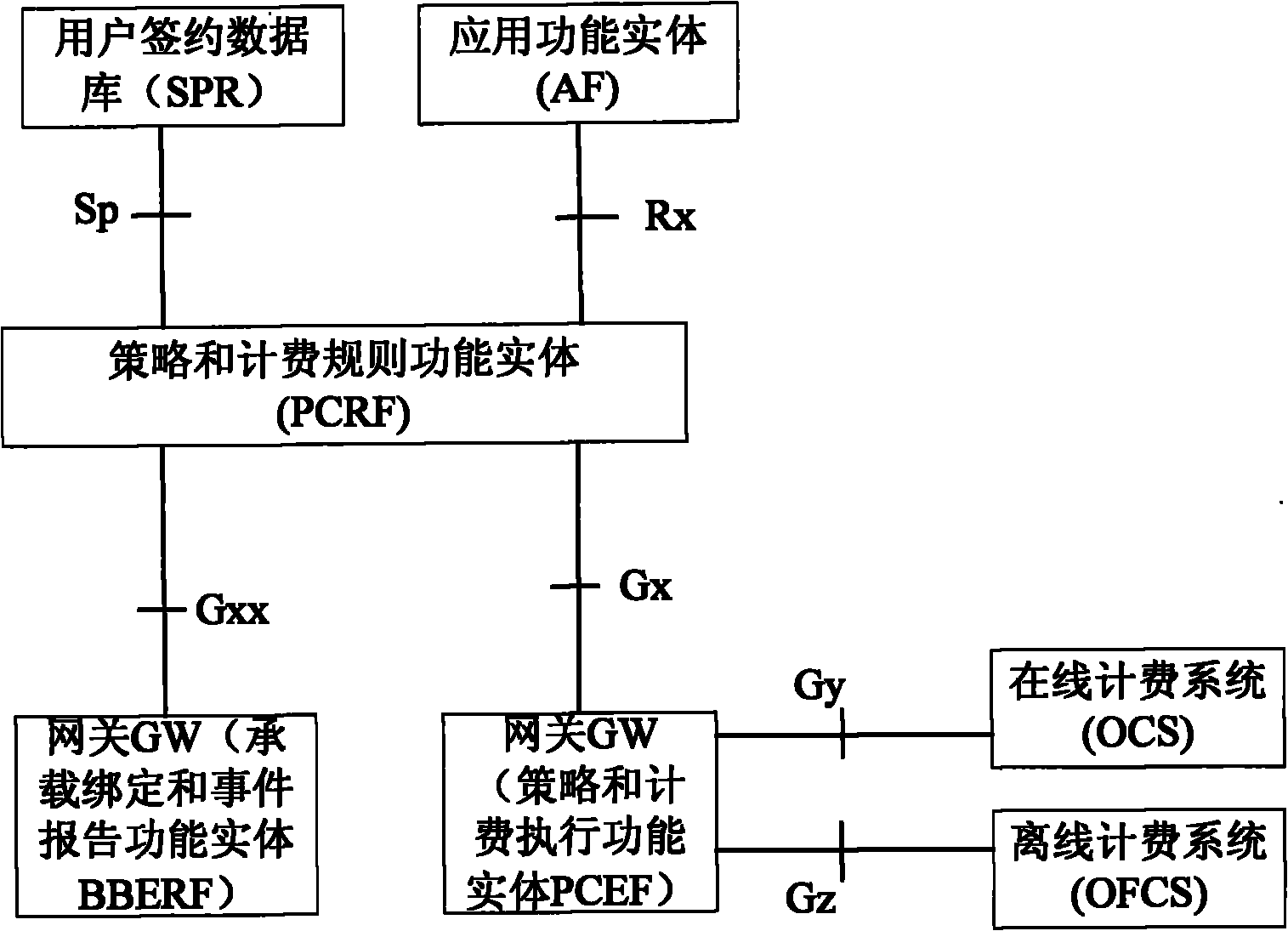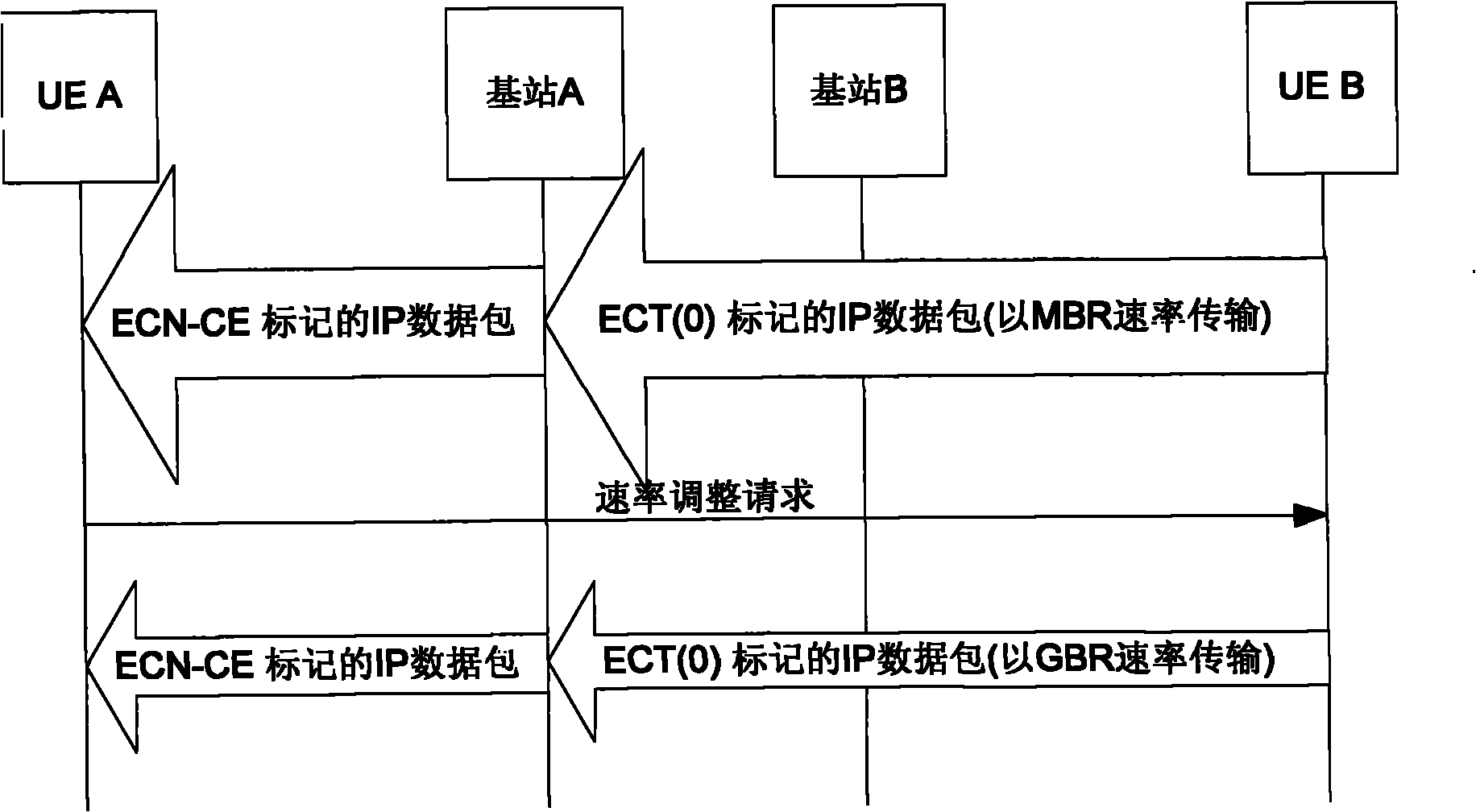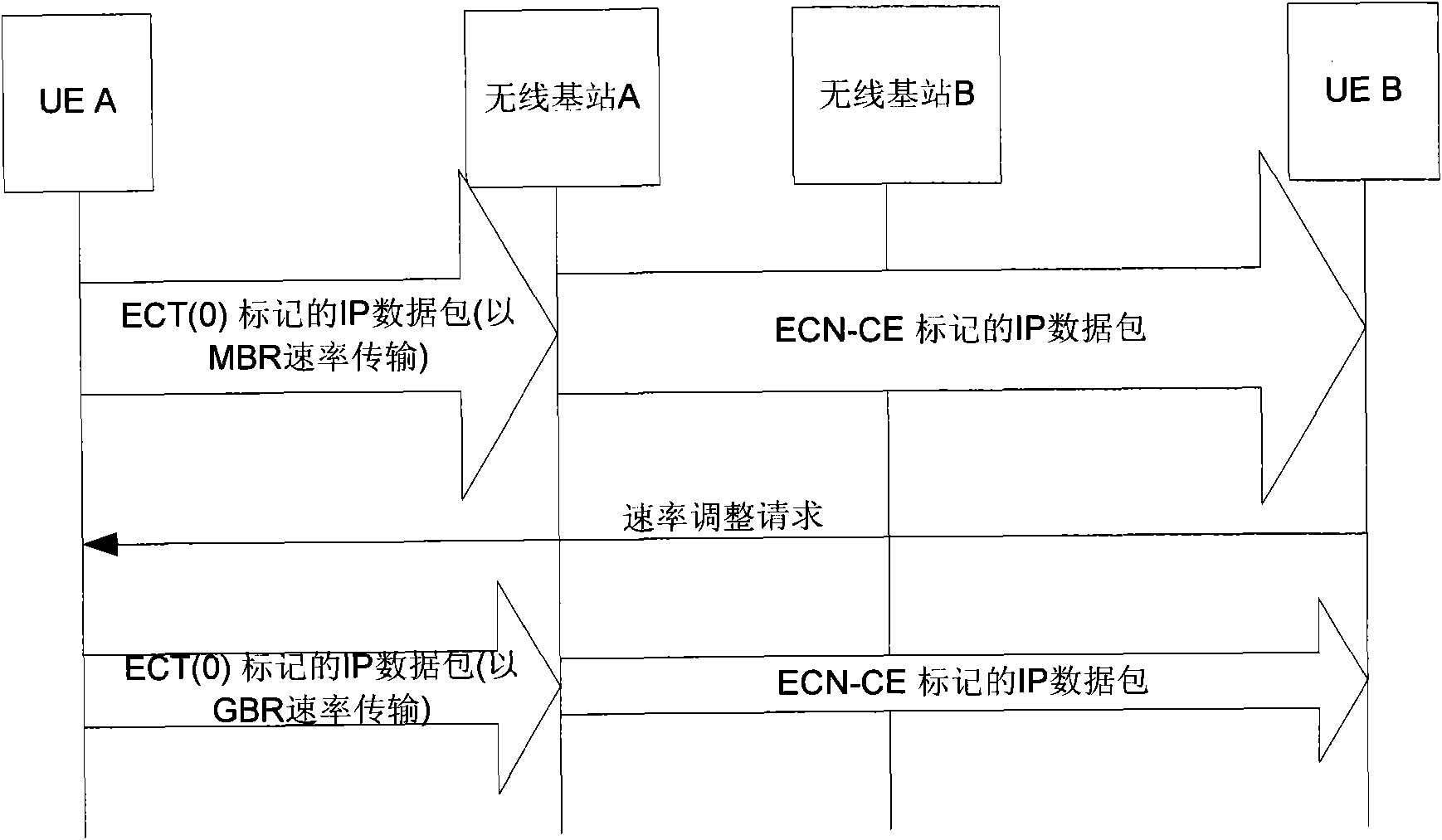Policy and charging control (PCC) method and system based on network load
A technology of policy charging control and network load, applied in the field of communication, can solve problems such as no solution
- Summary
- Abstract
- Description
- Claims
- Application Information
AI Technical Summary
Problems solved by technology
Method used
Image
Examples
Embodiment 1
[0099] This embodiment describes that after the user establishes an IP-CAN (IP-Connectivity Access Network, IP connection access network) session, after the UE initiates service access, the PCRF makes a policy decision. The IP-CAN session established by the UE does not have a BBERF. Specific process such as Figure 4 shown, including the following steps:
[0100] Step 401: During the UE's request to establish an IP-CAN session, the PCEF receives a request to establish an IP-CAN session message, which carries the user ID of the user and the PDN ID of the PDN network requesting access. In this embodiment , at this time, the PCEF will receive an indication that the wireless base station currently accessed by the UE supports ECN from the lower network element (such as the S-GW in the EPS system or the SGSN in the UMTS system, etc.);
[0101] Among them, in the EPS system, the specific process of the PCEF receiving the indication from the lower layer network element that the wire...
Embodiment 2
[0122] This embodiment describes that after the user establishes an IP-CAN session, the UE initiates service access, and the PCRF makes a policy decision. The IP-CAN session established by the UE has a BBERF. Specific process such as Figure 5 shown, including the following steps:
[0123]Step 501: In the process of the UE requesting to establish an IP-CAN session, the gateway where the BBERF resides receives a request to establish an IP-CAN session message, and the message carries the user ID of the user and the PDN ID of the PDN network requesting access. At this time, BBERF receives an indication that the UE's current wireless base station supports ECN from the lower network element (such as the S-GW in the EPS system, etc.);
[0124] Among them, in the EPS system, the specific process of BBERF receiving the indication that the UE's current wireless base station supports ECN from the lower layer network element is as follows:
[0125] In the attach process of the UE, the...
Embodiment 3
[0147] This embodiment describes the flow of PCRF update policy caused by UE establishing an IP-CAN session and accessing services as in Embodiment 1 or Embodiment 2, and switching to a wireless base station that does not support ECN due to UE movement. The IP-CAN session of the UE does not have a BBERF. Specific process such as Figure 6 shown, including the following steps:
[0148] Step 601: The UE accesses another wireless base station due to movement. During this process, the PCEF receives a request to modify the IP-CAN session message, which carries an indication that the wireless base station does not support ECN. The GW or the SGSN in the UMTS system, etc.) receives an indication that the wireless base station currently accessed by the UE does not support ECN;
[0149] Among them, in the EPS system, the specific process of PCEF receiving the indication of whether the wireless base station accessed by the UE supports ECN from the lower layer network element is as fol...
PUM
 Login to View More
Login to View More Abstract
Description
Claims
Application Information
 Login to View More
Login to View More - R&D
- Intellectual Property
- Life Sciences
- Materials
- Tech Scout
- Unparalleled Data Quality
- Higher Quality Content
- 60% Fewer Hallucinations
Browse by: Latest US Patents, China's latest patents, Technical Efficacy Thesaurus, Application Domain, Technology Topic, Popular Technical Reports.
© 2025 PatSnap. All rights reserved.Legal|Privacy policy|Modern Slavery Act Transparency Statement|Sitemap|About US| Contact US: help@patsnap.com



